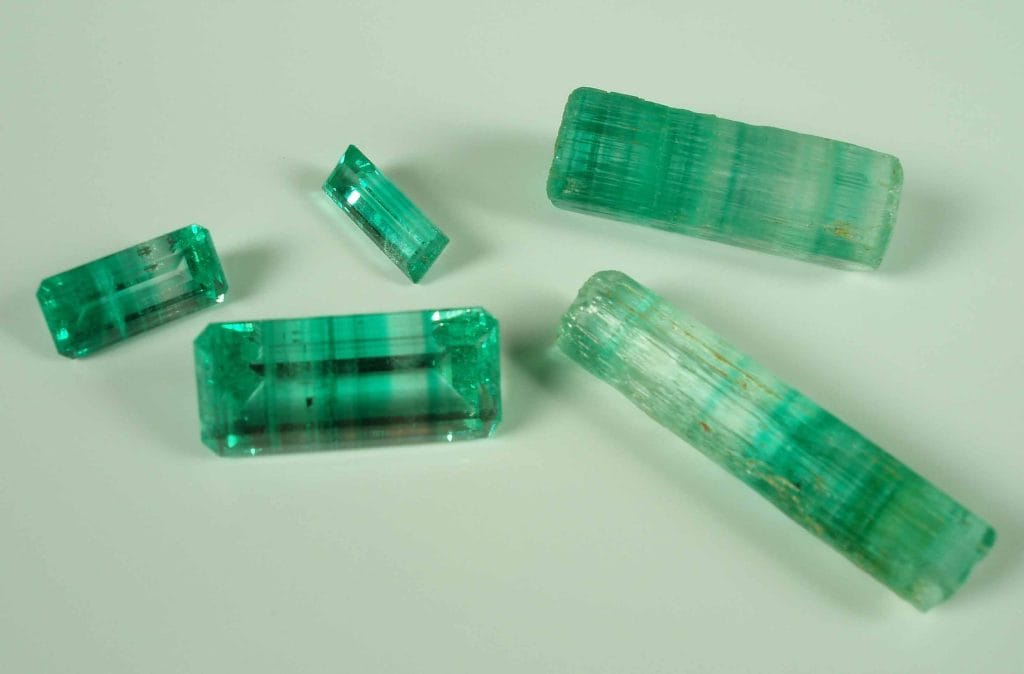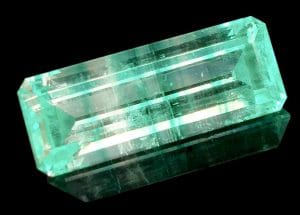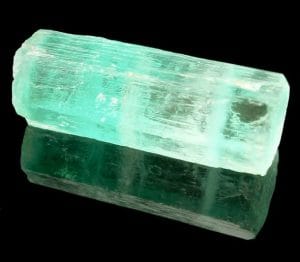The Hidden Green Gold: Unearthing the Rarity of the Torrington Emerald

For the dedicated rockhound, the thrill of the hunt is about more than just finding size or perfection—it’s about discovering a piece of geological history with a unique story. In the realm of emeralds, few stories are as distinctive and challenging as that of the Torrington Emeralds from the historic New England Tablelands of New South Wales, Australia.
While these gems may not rival the massive, high-carat stones of Colombia or Zambia, the Torrington material is a testament to the wild, varied chemistry of the Earth. If you love a challenge and the deep satisfaction of possessing a rare, locale-specific specimen, the Australian emerald from Torrington is the ultimate goal.

The Fossicker’s Prize: Why Torrington is Legendary
The Torrington area is famous among Australian fossickers, not just for the emeralds, but for its rich pockets of topaz, quartz, and other minerals. However, the emeralds are the true “green gold,” and their deposits—found primarily around areas like Fielders Hill—are largely historic and closed to commercial mining.
The search for these stones is a trip back in time, often involving scouring old mine dumps and creek beds for the elusive rough material. Their scarcity turns any successful find into a legendary score, giving these small, often sub-carat stones a value far beyond their weight.
The Geological Story Told in Stripes

What sets the Torrington Emerald apart from virtually every other emerald source in the world is its unique appearance: color banding. This isn’t just a minor variation; it’s a dramatic visual signature that explains the gem’s entire formation history.
- The Banded Look: The crystals are distinctly striped, with alternating zones of vivid emerald green and perfectly colorless beryl (known as Goshenite).
- A Tale of Boiling Water: This banding is a spectacular visual record of a dynamic geological event. Simply put, the beryl crystal was growing in a hydrothermal system that was boiling.
- When the system was in a liquid-rich phase (and highly saline), it dropped a lot of chromium ($\text{Cr}$) into the crystal structure, creating the green emerald bands.
- When the system flashed to a vapor-rich phase (low-salinity steam), it deposited beryl without the coloring agent, resulting in the clear, colorless bands.
- Rarity by Design: This unique, boiling-related formation process is what makes the Torrington material so rare and scientifically interesting.
A Rockhound’s Guide to the Gem’s Essentials
For the collector, knowing the technical details validates the find. Here is a condensed look at the core properties of the Torrington Emerald:
| Property | Detail | Notes for Rockhounds |
| Mineral/Variety | Beryl (Emerald) | Its color is officially from Chromium ($\text{Cr}$). |
| Crystal System | Hexagonal | Often found in pencil-like prisms, showing the straight-line growth. |
| Hardness (Mohs) | 7.5 | Good hardness, but beware of inclusions—emerald is notoriously brittle. |
| Origin Signature | Color Banding (Green & Clear) | The key identifier! Look for the distinct stripes parallel to the crystal length. |
| Typical Treatment | Often Untreated | Unlike most commercial emeralds, Torrington specimens are frequently sold as found, adding to their integrity and value. |
| Cutting Focus | Striped or Uniform | A skilled cutter can choose to cut the stone parallel to the stripes for a unique banded gem, or perpendicular to isolate a uniform green color. |
The Hunt Continues
While commercial operations have ceased, the spirit of the Australian gem rush lives on in Torrington. The challenge for today’s rockhound is to find a clean crystal, or even a small, already-cut gem, that clearly shows that incredible banded structure. A rough crystal displaying the signature green and colorless stripes is often as highly prized as a fully faceted gem because it perfectly tells the story of its dramatic geological birth.
The Torrington Emerald is a treasure that offers a compelling mix of beauty, rarity, and a fascinating look into the Earth’s inner plumbing—a true gem for any serious collector.
